Innovative Hydrogeophysical Approaches as Aids to Assess Hungarian Groundwater Bodies
Abstract
1. Introduction
2. Materials and Methods
2.1. Conditions and the Relevant Situations of the Hungarian Groundwater Bodies
2.2. Study Sites
2.3. The Applied Geophysical Methods
2.3.1. Geoelectric Surveying Methods
2.3.2. Hydrogeophysical Logging Methods
3. Results
3.1. Conventional and Nonconventional Geoelectric Arrays
3.1.1. Study of a Series of Faults
3.1.2. Fracture and Water-Bearing Zone Detection
3.1.3. Study of a Fault Zone and Fracture Zones
3.2. Well Logging in Porous Water Bodies
4. Discussion and Conclusions
Author Contributions
Funding
Institutional Review Board Statement
Informed Consent Statement
Data Availability Statement
Acknowledgments
Conflicts of Interest
References
- Buday, T.; Szűcs, P.; Kozák, M.; Püspöki, Z.; McIntosh, R.W.; Bódi, E.; Bálint, B.; Bulátkó, K. Sustainability aspects of thermal water production in the region of Hajdúszoboszló-Debrecen, Hungary. Environ. Earth Sci. 2015, 74, 7511–7521. [Google Scholar] [CrossRef]
- National Watershed Management Plan (in Hungarian). Available online: https://www.vizugy.hu/index.php?module=vizstrat&programelemid=149 (accessed on 5 December 2016).
- Szűcs, P.; Madarász, T. Hydrogeology in the Carpathian basin how to proceed? Eur. Geol. 2013, 35, 17–20. [Google Scholar]
- National Water Research Program (in Hungarian). Available online: https://mta.hu/data/dokumentumok/Viztudomanyi%20Program/NVKP_20180331.pdf (accessed on 3 December 2018).
- Hubbard, S.S.; Rubin, Y. Introduction to hydrogeophysics. In Hydrogeophysics; Water Science and Technology Library; Rubin, Y., Hubbard, S.S., Eds.; Springer: Dordrecht, The Netherlands, 2005; p. 50. [Google Scholar]
- Ward, S.H. Geotechnical and Environmental Geophysics: Volume I, Review and Tutorial; Stanley, H.W., Ed.; Society of Exploration Geophysicists: Tulsa, OK, USA, 1990; p. 398. [Google Scholar]
- McNeill, J.D. Advances in electromagnetic methods for groundwater studies. Geoexploration 1991, 27, 65–80. [Google Scholar] [CrossRef]
- Chegbeleh, L.P.; Akudago, J.A.; Nishigaki, N.; Edusei, S.N.K. Electromagnetic Geophysical Survey for Groundwater Exploration in the Voltaian of Northern Ghana. J. Environ. Hydrol. 2009, 17, 9. [Google Scholar]
- Keleko, T.D.A.; Tadjou, J.M.; Kamguia, J.; Tabod, T.C.; Feumoe, A.N.S.; Kenfack, J.V. Groundwater Investigation Using Geoelectrical Method: A Case Study of the Western Region of Cameroon. J. Water Resour. Prot. 2013, 5, 633–641. [Google Scholar] [CrossRef]
- Hafeeza, A.T.H.; Sabeta, H.S.; El-Sayedb, A.N.; Zayeda, M.A. Geoelectrical exploration of groundwater at West Dayrout Area, Assiut Governorate, Egypt. Nriag J. Astron. Geophys. 2018, 7, 279–296. [Google Scholar] [CrossRef]
- Beamish, D. Quantitative 2D VLF data interpretation. J. Appl. Geophys. 2000, 45, 33–47. [Google Scholar] [CrossRef]
- Linde, N.; Pedersen, L.B. Characterization of a fractured granite using radio magnetotelluric (RMT) data. Geophysics 2004, 69, 1125–1350. [Google Scholar] [CrossRef]
- Schütze, C.; Vienken, T.; Werban, U.; Dietrich, P.; Finizola, A.; Carsten, L. Joint application of geophysical methods and Direct Push-soil gas surveys for the improved de-lineation of buried fault zones. J. Appl. Geophys. 2012, 82, 129–136. [Google Scholar] [CrossRef]
- Francese, R.; Mazzarini, F.; Bistacchi, A.; Morelli, G.; Pasquarè, G.; Praticelli, N.; Robain, H.; Wardell, N.; Zaja, A. A structural and geophysical approach to the study of fractured aquifers in the Scansano-Magliano in Toscana Ridge, southern Tuscany, Italy. Hydrogeol. J. 2009, 17, 1233–1246. [Google Scholar] [CrossRef]
- Bievre, G.; Jongmans, D.; Winiarski, T.; Zumbo, V. Application of geophysical measurements for assessing the role of fissures in water infiltration within a clay landslide (Trieves area, French Alps). Hydrol. Process. 2012, 26, 2128–2142. [Google Scholar] [CrossRef]
- Jones, G.; Sentanac, P.; Zielinski, M. Desiccation cracking using 2-D and 3-D electrical resistivity tomography: Validation on a flood embankment. J. Appl. Geophys. 2014, 106, 196–211. [Google Scholar] [CrossRef]
- Falco, P. Sondages Géoélectriques “Null-Arrays” Pour la Caractérisation des Structures de Subsurface. Ph.D. Thesis, Université de Neuchâtel, Faculté des sciences, Neuchâtel, Switzerland, 2013. [Google Scholar]
- Kirsch, R. Groundwater Geophysics: A Tool for Hydrogeology; Reinhard, K., Ed.; Springer: Berlin, Germany, 2006. [Google Scholar]
- Barnhardt, W.A.; Kayen, R.E. Radar Structure of Earthquake-Induced, Coastal Landslides in Anchorage, Alaska. Environ. Geosci. 2000, 7, 38–45. [Google Scholar] [CrossRef]
- Jeannin, M.; Garambois, S.; Jongmans, D.G. Multiconfiguration GPR Measurements for Geometric Fracture Characterization in Limestone Cliffs (Alps). Geophysics 2006, 71, 85–92. [Google Scholar] [CrossRef]
- Steelman, C.M.; Kennedy, C.; Parker, B.L. Geophysical Conceptualization of a Fractured Sedimentary Bedrock Riverbed using Ground Penetrating Radar. J. Hydrol. 2015, 521, 433–446. [Google Scholar] [CrossRef]
- Revil, A.; Karaoulis, M.; Johnson, T.; Kemna, A. Review: Some low-frequency electrical methods for subsurface characterization and monitoring in hydrogeology. Hydrogeol. J. 2012, 20, 617–658. [Google Scholar] [CrossRef]
- Ward, S.H. Geotechnical and Environmental Geophysics; Vol. I. Review and Tutorial; SEG: Tulsa, Oklahoma, 1990. [Google Scholar]
- Dahlin, T.; Zhou, B. A numerical comparison of 2D resistivity imaging with 10 electrode arrays. Geophys Prospect. 2004, 52, 379–398. [Google Scholar] [CrossRef]
- Tabbagh, J.; Samouelian, A.; Cousin, I. Numerical modelling of direct current electrical resistivity for the characterisation of cracks in soils. J. Appl. Geophys. 2007, 62, 313–323. [Google Scholar] [CrossRef]
- Szalai, S.; Koppán, A.; Szokoli, K.; Szarka, L. Geoelectric imaging properties of traditional arrays and of the optimized Stummer configuration. Near Surf. Geophys. 2013, 11, 51–62. [Google Scholar] [CrossRef][Green Version]
- Stummer, P.; Maurer, H.; Green, A.G. Experimental design: Electrical resistivity data sets that provide optimum subsurface information. Geophysics 2004, 69, 120–139. [Google Scholar] [CrossRef]
- Szalai, S.; Szokoli, K.; Prácser, E.; Metwaly, M.; Zubair, M.; Szarka, L. An alternative way in electrical resistivity prospection: The quasi null arrays. Geophys. J. Int. 2020, 220, 1463–1480. [Google Scholar] [CrossRef]
- Zubair, M.; Prácser, E.; Metwaly, M.; Lemperger, I.; Szarka, L.; Israil, M.; Szalai, S. A comparative study of the Imaging capability of Quasi-Null and Dipole-Dipole electrode configurations over an elongated, dipping, semi-infinite conducting body. J. Appl. Geophys. 2020, 175, 103969. [Google Scholar] [CrossRef]
- Szalai, S.; Lemperger, I.; Metwaly, M.; Kis, Á.; Wesztergom, V.; Szokoli, K.; Novák, A. Multiplication of the depth of detectability using γ11n arrays. J. Appl. Geophys. 2014, 107, 195–206. [Google Scholar] [CrossRef]
- Szalai, S.; Kis, A.; Metwaly, M.; Lemperger, I.; Szokoli, K. Increasing the effectiveness of electrical resistivity tomography using γ11n configurations. Geophys. Prospect. 2014, 63, 508–524. [Google Scholar] [CrossRef]
- De Oliveira Braga, A.C.; Filho, W.M.; Dourado, J.C. Resistivity (DC) method applied to aquifer protection studies. Rev. Bras. De Geofísica 2006, 24, 573–581. [Google Scholar]
- Vaudelet, P.; Schmutz, M.; Pessel, M.; Franceschi, M.; Guérin, R.; Atteia, O.; Blondel, A.; Ngomseu, C.; Galaup, S.; Rejiba, F.; et al. Mapping of contaminant plumes with geoelectrical methods. A case study in urban context. J. Appl. Geophys. 2011, 75, 738–751. [Google Scholar] [CrossRef]
- Szűcs, P.; Kompár, L.; Palcsu, L.; Deák, J. Estimation of groundwater replenishment change at a Hungarian recharge area. Carpathian J. Earth Environ. Sci. 2015, 10, 227–246. [Google Scholar]
- Petitta, M.; Bodó, B.; Cseko, A.; Del Bon, A.; Fernandez, I.; García Alibrandi, C.M.; Garcia Padilla, M.; Hartai, É.; Hinsby, K.; Müller, P.; et al. The KINDRA project: Sharing and evaluating groundwater research and knowledge in Europe. Acque Sotter. Ital. J. Groundw. 2018, 7. [Google Scholar] [CrossRef]
- Palcsu, L.; Kompár, L.; Deák, J.; Szűcs, P.; Papp, L. Estimation of the natural groundwater recharge using tritium-peak and tritium/helium-3 dating techniques in Hungary. Geochem. J. 2017, 51, 439–448. [Google Scholar] [CrossRef]
- Haás, J. (Ed.) Geology of Hungary; Springer: Berlin/Heidelberg, Germany, 2013. [Google Scholar]
- Tóth, J.; Almási, I. Interpretation of observed fluid potential patterns in a deep sedimentary basin under tectonic compression Hungarian Great Plain, Pannonian Basin. Geofluids 2001, 1, 11–36. [Google Scholar] [CrossRef]
- Miklós, R.; Darabos, E.; Lénárt, L.; Kovács, A.; Pelczéder, Á.; Szabó, N.P.; Szűcs, P. Karst water resources and their complex utilization in the Bükk Mountains, northeast Hungary: An assessment from a regional hydrogeological perspective. Hydrogeol. J. 2020, 28, 2159–2172. [Google Scholar] [CrossRef]
- Szűcs, P.; Civan, F.; Virág, M. Applicability of the most frequent value method in groundwater modeling. Hydrogeol. J. 2006, 14, 31–43. [Google Scholar] [CrossRef]
- Szalai, S.; Kovács, L.; Kuslits, L.; Facskó, G.; Gribovszki, K.; Kalmár, J.; Szarka, L. Characterisation of fractures and fracture zones in a carbonate aquifer using Electrical Resistivity Tomography and Pricking Probe methods. J. Geosci. Environ. Prot. 2018, 6, 1–21. [Google Scholar]
- Dudko, A. Structural Elements of the Balaton Area; MÁFI: Budapest, Hungary, 1991. [Google Scholar]
- Széky-Fux, V.; Püspöki, Z.; Kozák, M. 2007: Covered neogen magmatism in Eastern Hungary. Acta Geographica and Geologica et Meteorologica Debrecina. Geol. Geomorphol. Phys. Geogr. Ser. 2007, 2, 79–104. [Google Scholar]
- Prácser, E. Annual Report about the Activity of the Geoelectric Laboratory in 1988. 3D d.c. Modeling; Eötvös Loránd Geophysical Institute, Internal Report: Budapest, Hungary, 1999. (In Hungarian) [Google Scholar]
- Advanced Geosciences. Instruction Manual of AGI EarthImager 2D, Version 2.1.7; Advanced Geosciences Inc.: Austin, TX, USA, 2006. [Google Scholar]
- Loke, M.H. RES2DINV*64 ver.4.08. In Rapid 2-D Resisitivity & IP Inversion Using the Last-Squares Method; Geotomo Software: Penang, Malaysia, 2018. [Google Scholar]
- Dey, A.; Morrison, H.F. Resistivity modelling for arbitrary shaped two-dimensional structures. Geophys. Prospect. 1979, 27, 106–136. [Google Scholar] [CrossRef]
- Serra, O. Fundamentals of Well-Log Interpretation; Elsevier: New York, NY, USA, 1984. [Google Scholar]
- Walsh, D.; Turner, P.; Grunewald, E.; Zhang, H.; Butler, J.J.; Reboulet, E.; Knobbe, S.; Christy, T.; Lane, J.W.; Johnson, C.D.; et al. A small-diameter NMR logging tool for groundwater investigations. Groundwater 2013, 51, 914–926. [Google Scholar] [CrossRef]
- Fejes, I.; Jósa, E. The engineering geophysical sounding method. Principles, instrumentation, and computerised interpretation. In Geotechnical and Environmental Geophysics; 2, Environmental and Groundwater; Ward, S.H., Ed.; SEG: Tulsa, OK, USA, 1990; pp. 321–331. [Google Scholar]
- Bear, J. Dynamics of Fluids in Porous Media; Dover: New York, NY, USA, 1972. [Google Scholar]
- Juhász, J. Hydrogeology; Akadémiai Kiadó: Budapest, Hungary, 2002. (In Hungarian) [Google Scholar]
- Larionov, V.V. Radiometry of Boreholes; Nedra: Moscow, Russia, 1969. (In Russian) [Google Scholar]
- Csókás, J. Determination of water discharge and quality using geophysical well logs. Magy. Geofiz. 1995, 35, 176–203. (In Hungarian) [Google Scholar]
- Alger, R.P. Interpretation of electric logs in fresh water wells in unconsolidated formation. SPE Reprint Series 1 1971, 255, 1–25. [Google Scholar]
- Archie, G.E. The electrical resistivity log as an aid in determining some reservoir characteristics. SpeTrans. Aime 1942, 146, 54–62. [Google Scholar] [CrossRef]
- Hartigan, J.A.; Wong, M.A. Algorithm AS 136: A k-means clustering algorithm. J. R. Stat. Soc. Ser. C Appl. Stat. 1979, 28, 100–108. [Google Scholar] [CrossRef]
- Szabó, N.P.; Nehéz, K.; Hornyák, O.; Piller, I.; Deák, C.; Hanzelik, P.P.; Kutasi, C.; Ott, K. Cluster analysis of core measurements using heterogeneous data sources: An application to complex Miocene reservoirs. J. Pet. Sci. Eng. 2019, 178, 575–585. [Google Scholar] [CrossRef]
- Szabó, N.P.; Dobróka, M. Robust estimation of reservoir shaliness by iteratively reweighted factor analysis. Geophysics 2017, 82, D69–D83. [Google Scholar] [CrossRef]
- Szabó, N.P.; Dobróka, M.; Drahos, D. Factor analysis of engineering geophysical sounding data for water-saturation estimation in shallow formations. Geophysics 2012, 77, WA35–WA44. [Google Scholar] [CrossRef]
- Hauck, C.; Mühll, D.V. Inversion and Interpretation of Two-dimensional Geoelectrical Measurements for Detecting Permafrost in Mountainous Regions. Permafr. Periglac. Process. 2003, 14, 305–318. [Google Scholar] [CrossRef]
- Kuras, O.; Meldrum, P.I.; Haslam, E.P.; Wilkinson, P.B.; Krautblatter, M.; Murton, J.B.; Ogilvy, R.D. Time-lapse Capacitive Resistivity Imaging A Novel Methodology for the Monitoring of Permafrost Processes in Bedrock. In Proceedings of the Near Surface 2011 17th European Meeting of Environmental and Engineering Geophysics 2011, Leicester, UK, 12–14 September 2011. [Google Scholar]
- Szabó, N.P.; Kormos, K.; Dobróka, M. Evaluation of hydraulic conductivity in shallow groundwater formations: A comparative study of the Csókás’ and Kozeny–Carman model. Acta Geod Geophys 2015, 50, 461–477. [Google Scholar] [CrossRef]
- Szabó, N.P.; Dobróka, M.; Turai, E.; Szűcs, P. Factor analysis of borehole logs for evaluating formation shaliness: A hydrogeophysical application for groundwater studies. Hydrogeol. J. 2014, 22, 511–526. [Google Scholar] [CrossRef]
- Szabó, N.P. Hydraulic conductivity explored by factor analysis of borehole geophysical data. Hydrogeol. J. 2015, 23, 869–882. [Google Scholar] [CrossRef]
- Dobróka, M.; Szabó, N.P.; Tóth, J.; Vass, P. Interval inversion approach for an improved interpretation of well logs. Geophysics 2016, 81, D163–D175. [Google Scholar] [CrossRef]
- Abordán, A.; Szabó, N.P. Uncertainty reduction of interval inversion estimation results using a factor analysis approach. Int. J. Geomath. 2020, 11, 1–17. [Google Scholar] [CrossRef]

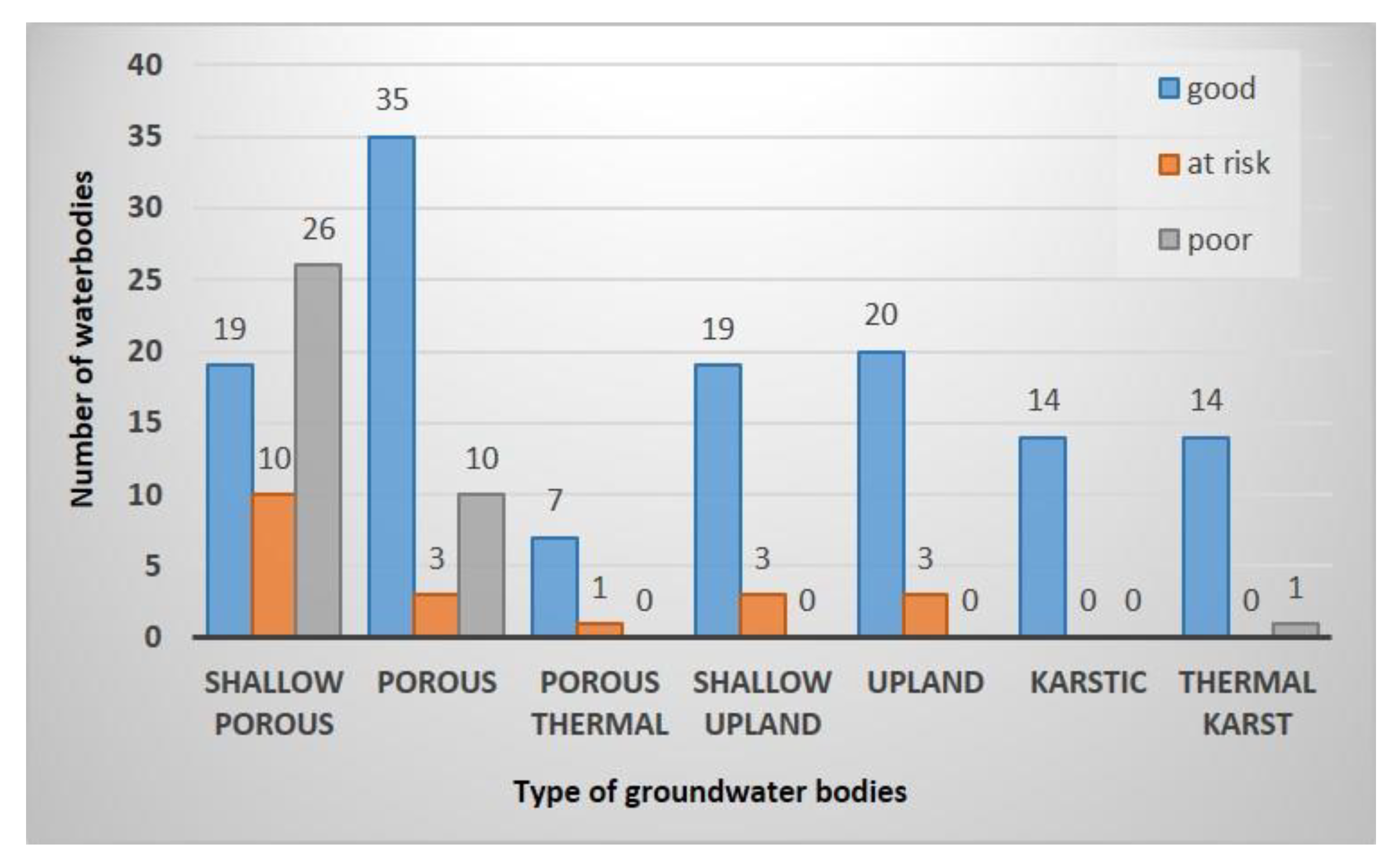

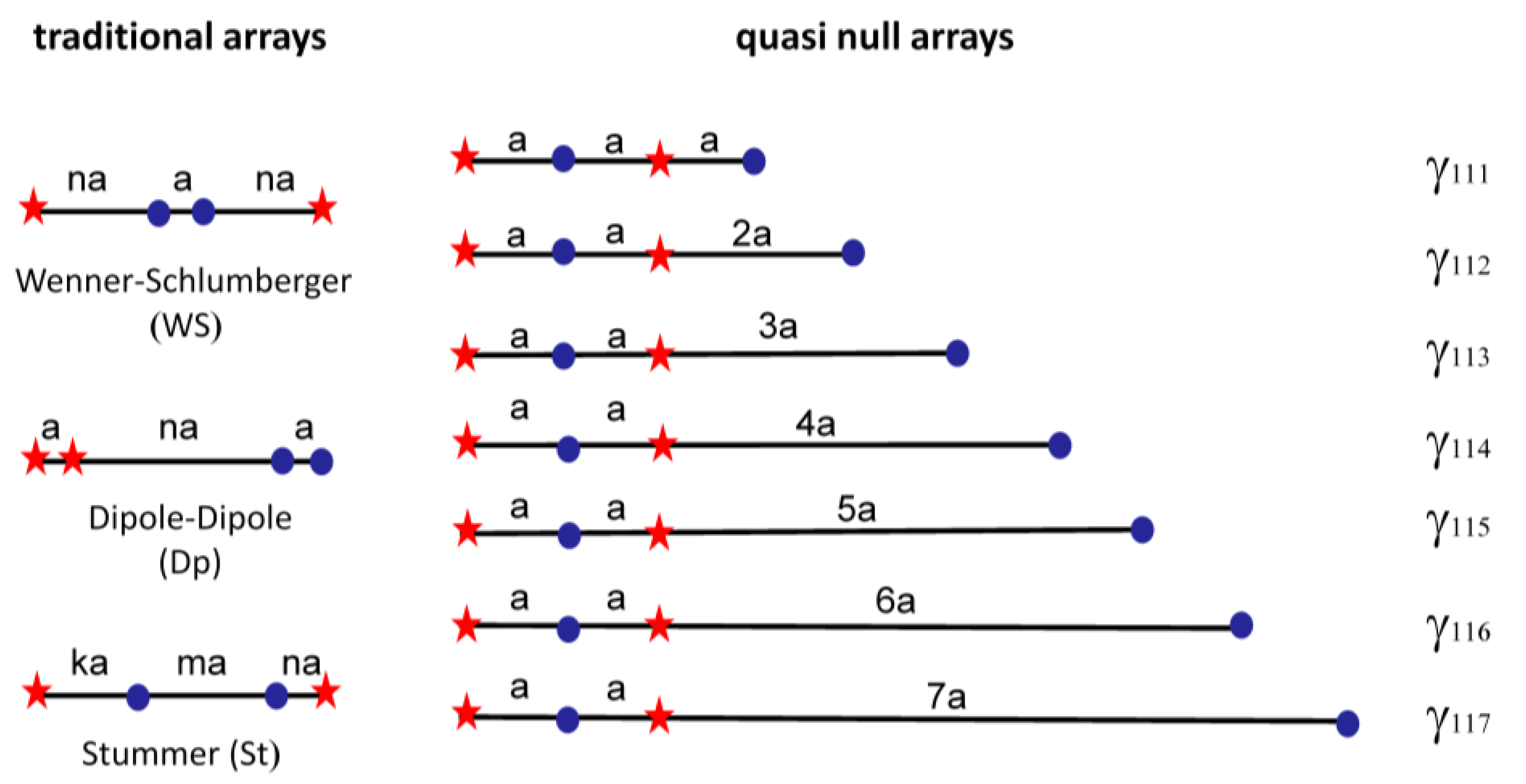
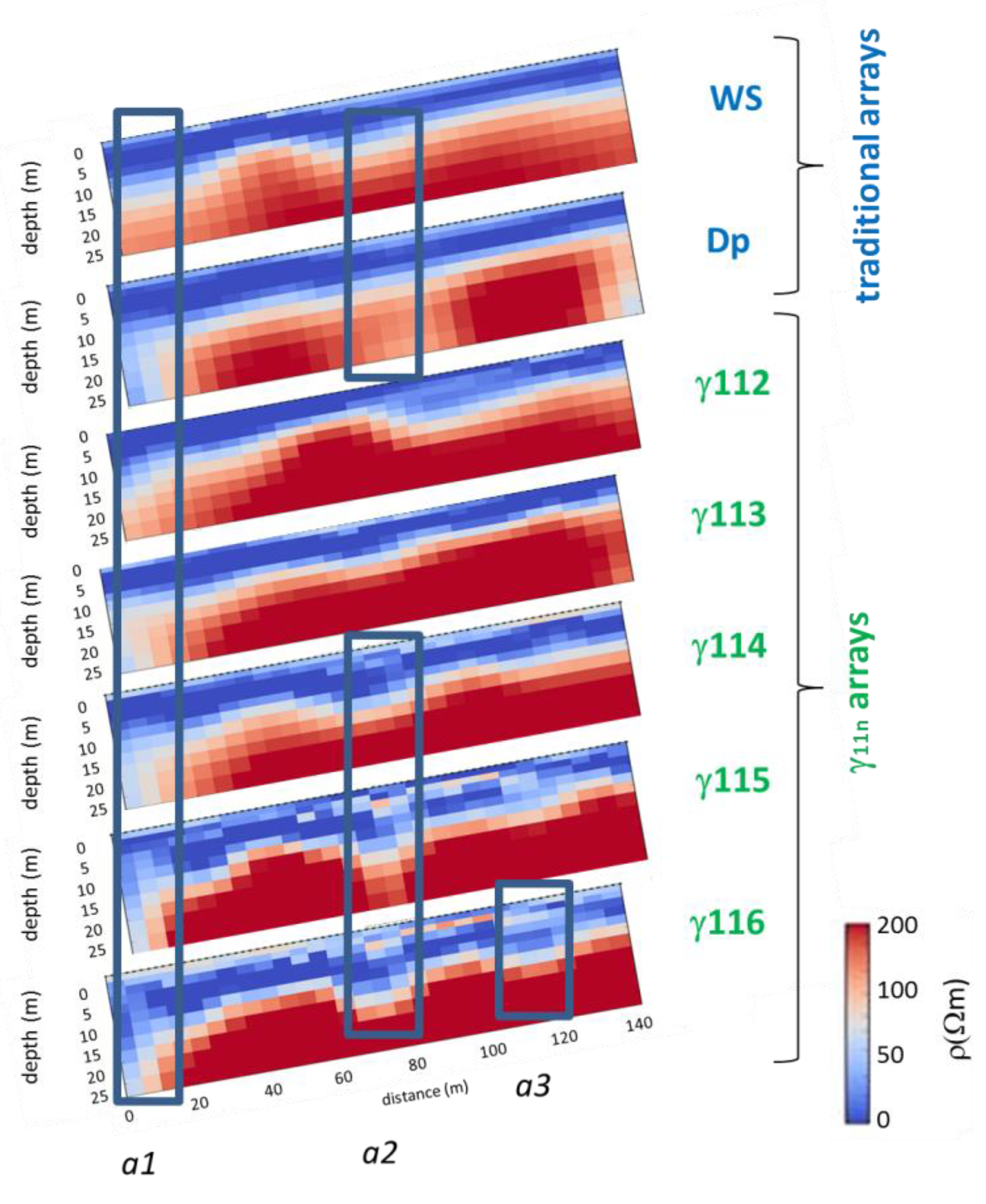
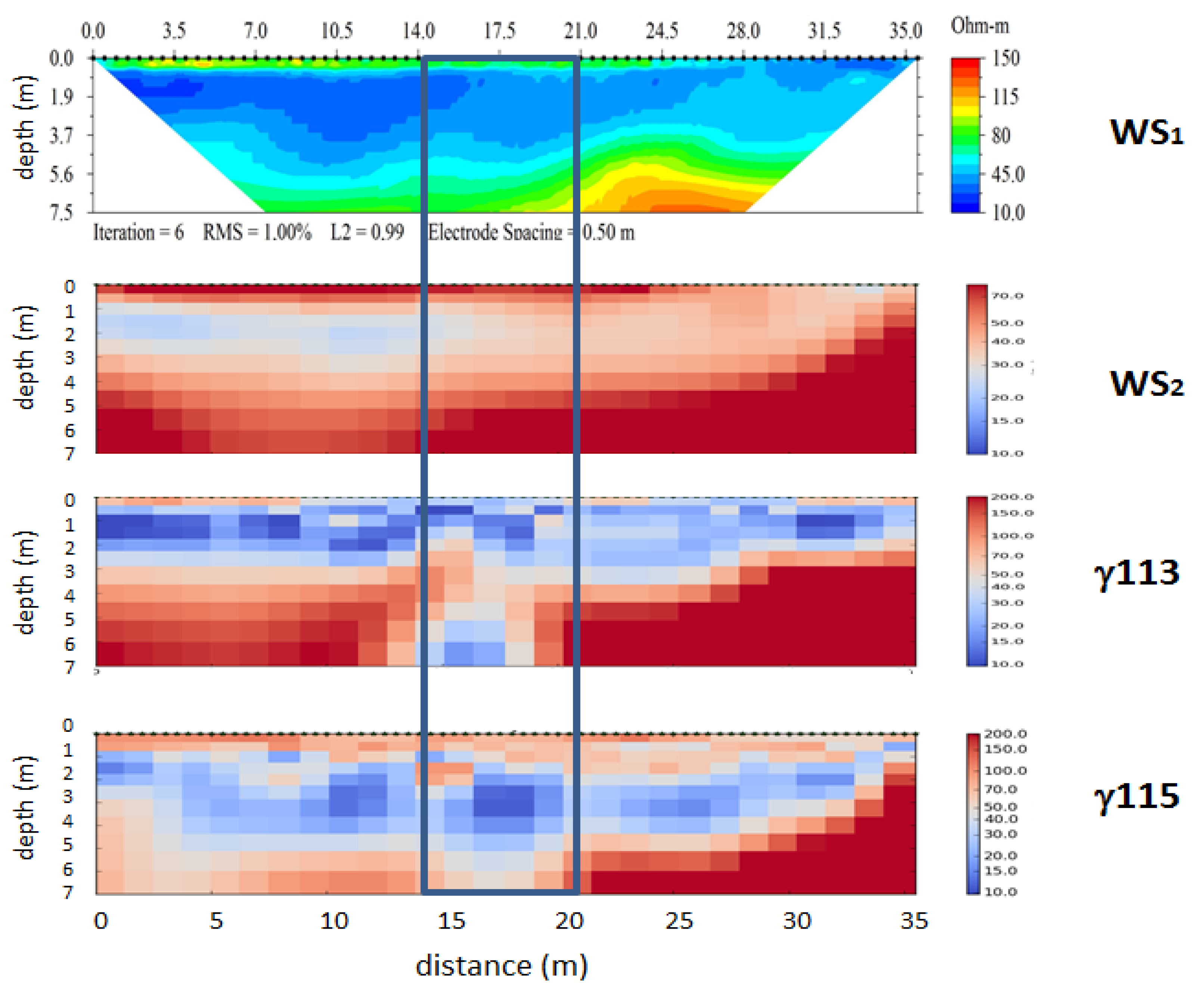

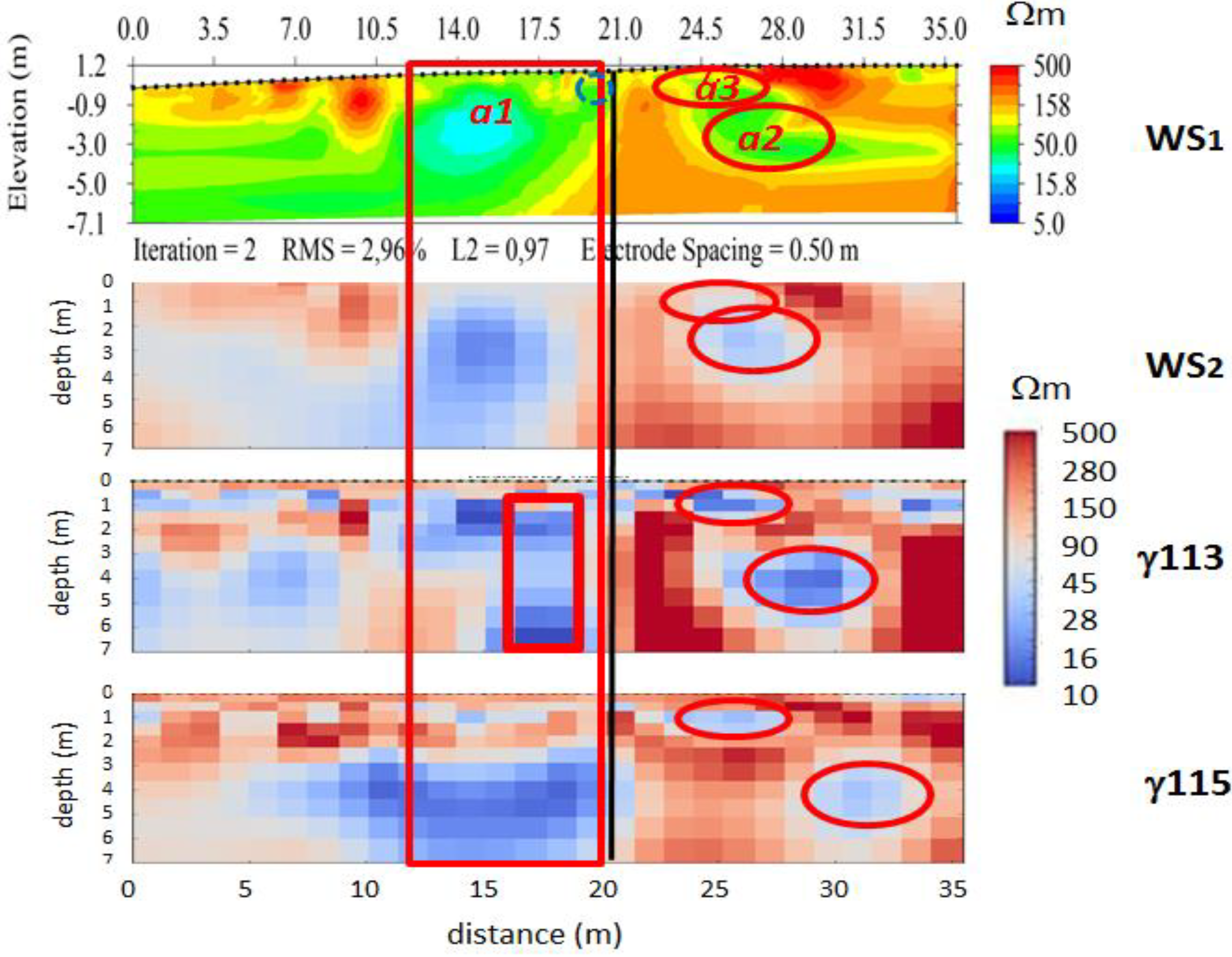
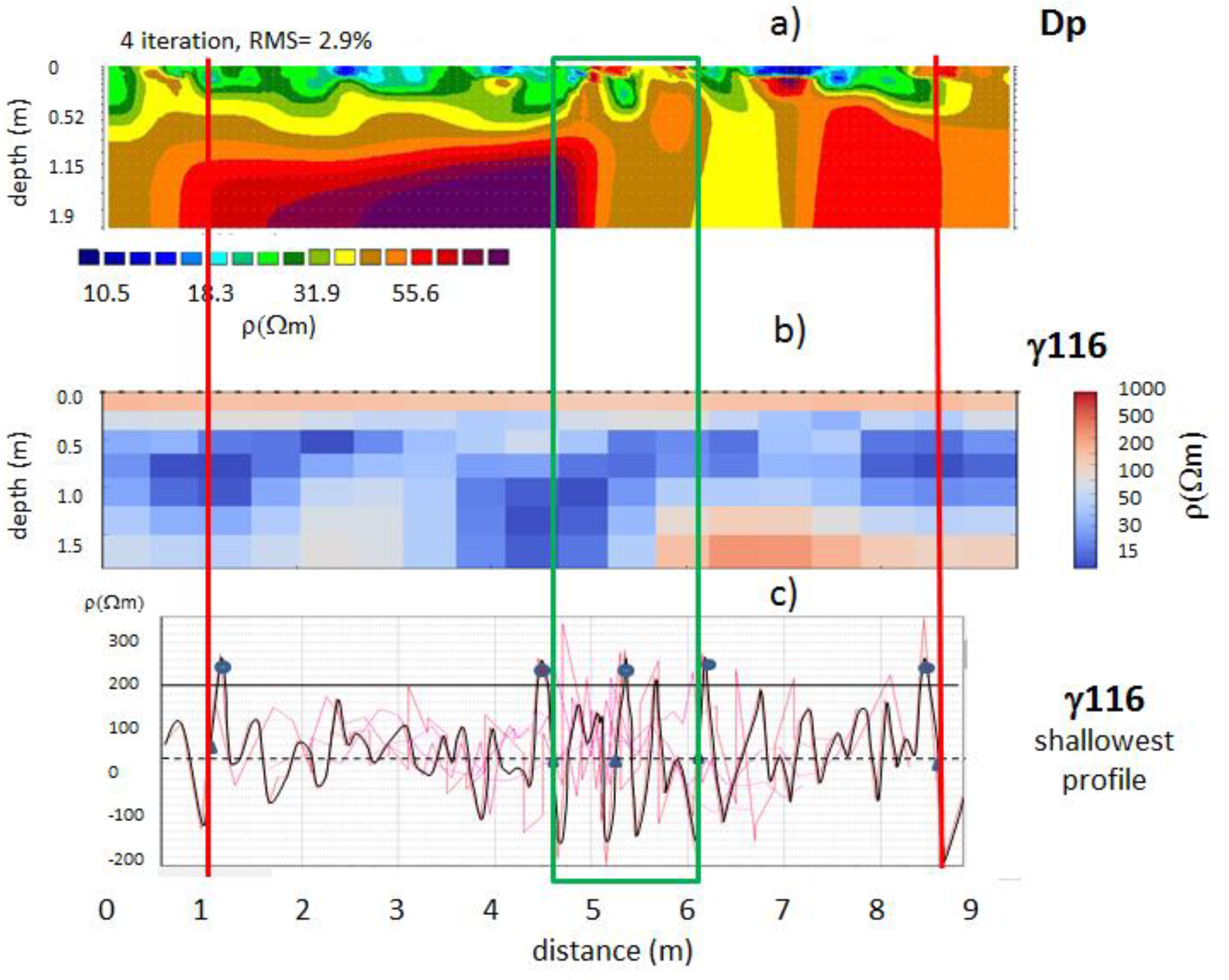
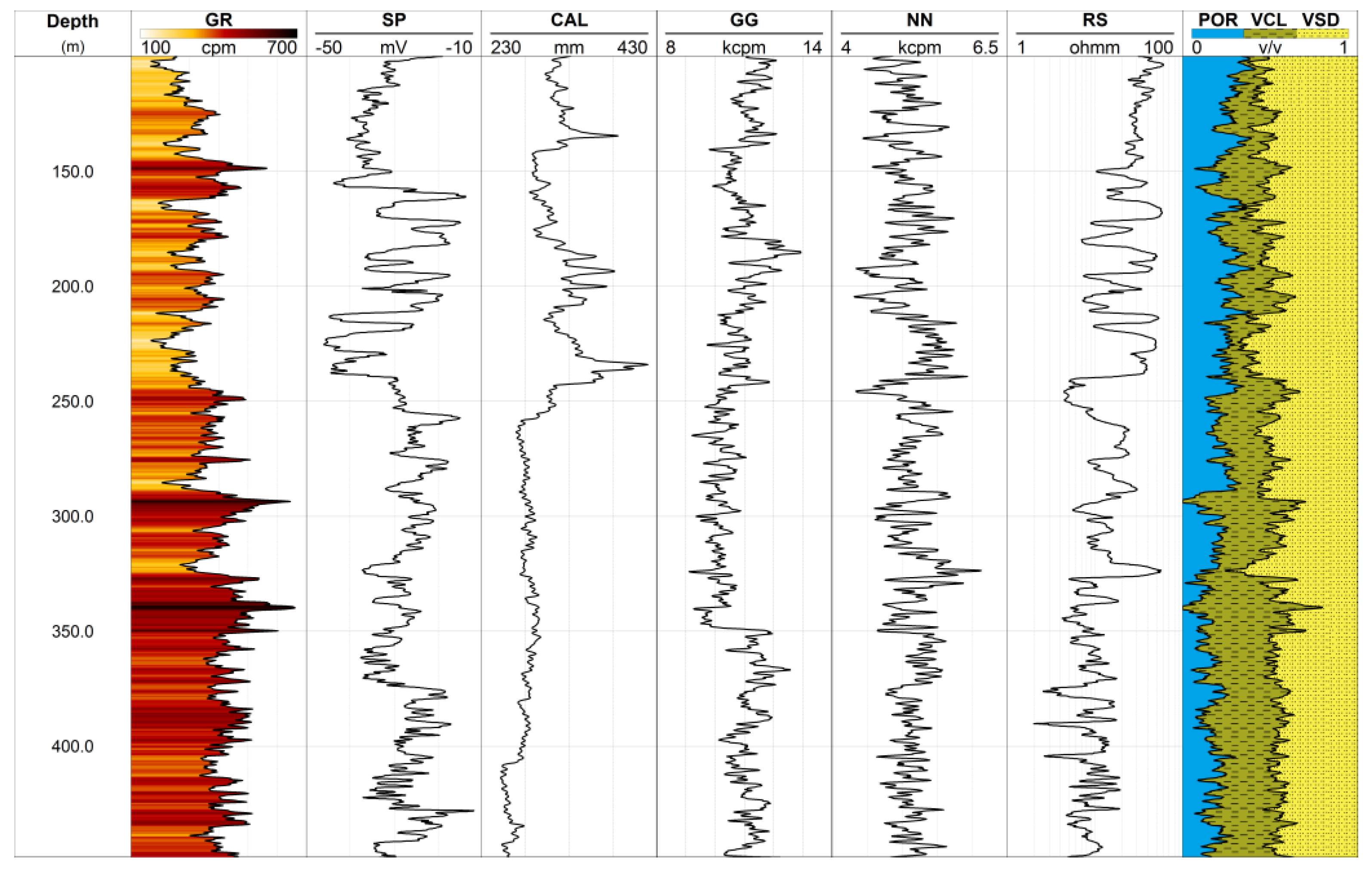


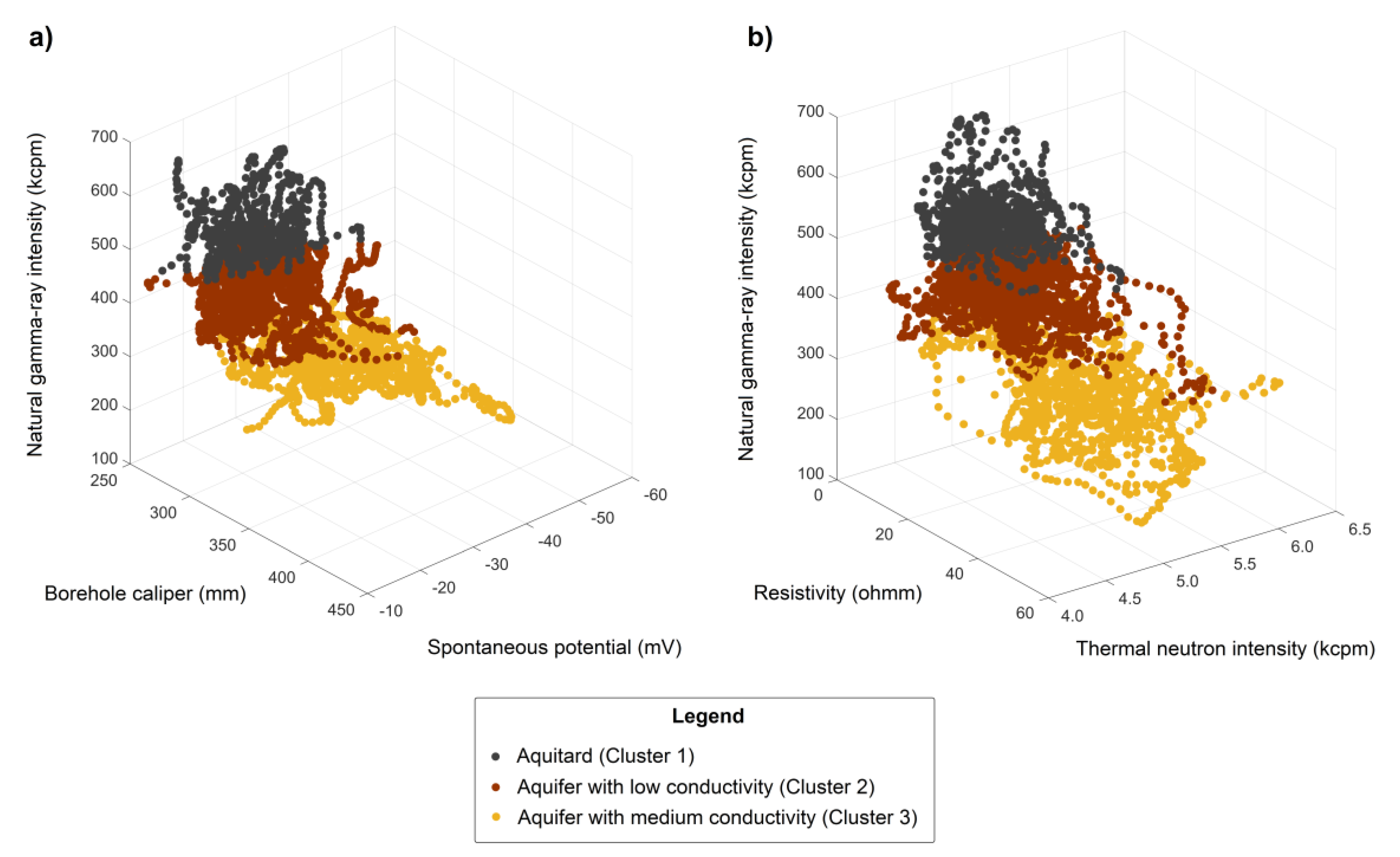
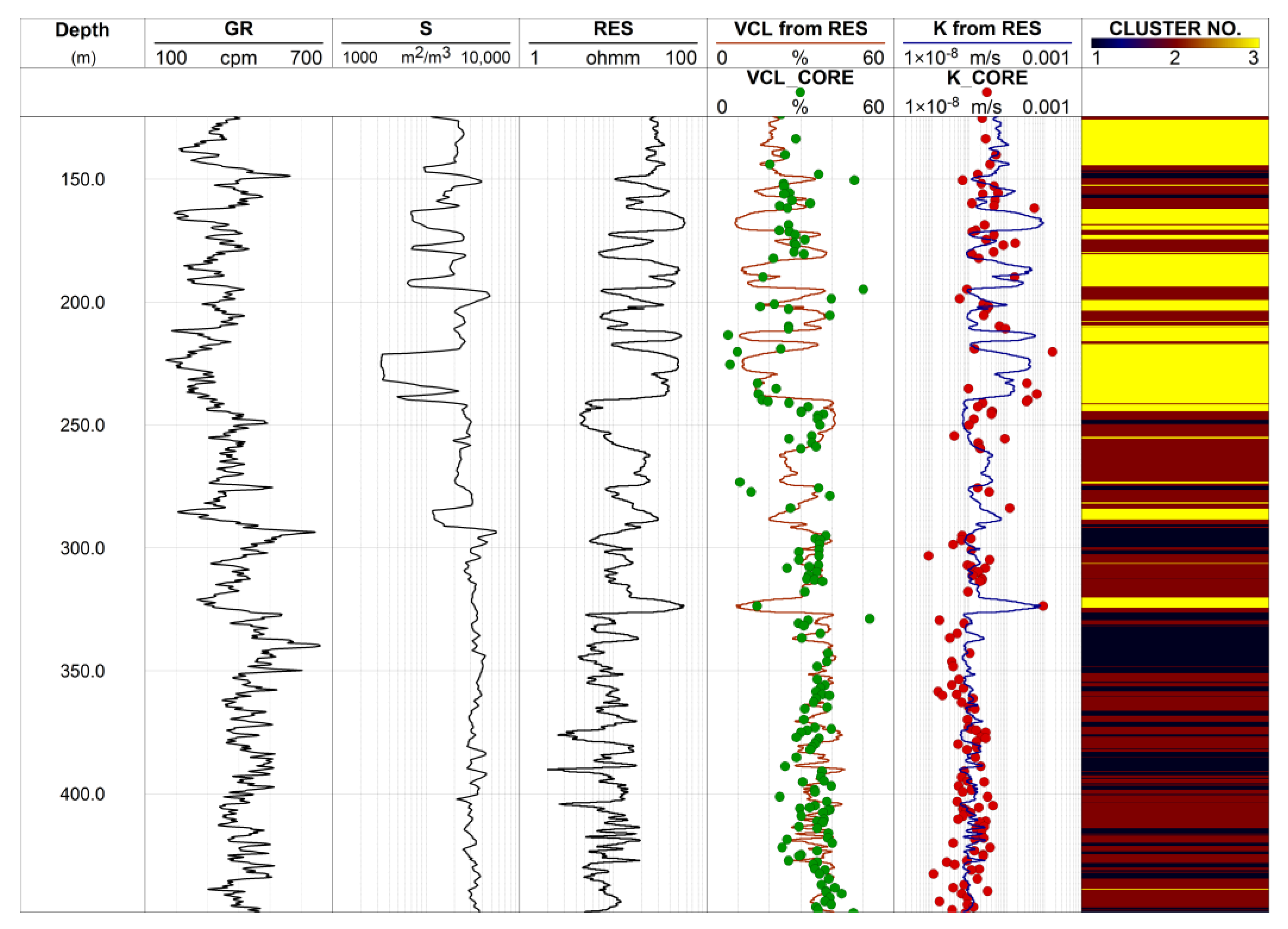
| Challenge No. | Hydrogeological Problem | Hydrogeophysical Method | |||
|---|---|---|---|---|---|
| DC Geoelectric | Lithology Logs | Porosity Logs | Resistivity Logs | ||
| 1 | Identification and classification of aquifers | X | X | ||
| 2 | Detection of lateral and vertical extensions of the groundwater bodies | X | X | ||
| 3 | Detection of lateral and vertical changes inside the groundwater bodies | X | X | X | X |
| 4 | Detection of faults, fractures and conduits in karst, volcanic and metamorphic formations | X | X | ||
| 5 | Estimation of different hydraulic and petrophysical properties | X | X | X | |
| 6 | Detection of contaminations plumes in the subsurface media | X | X | ||
Publisher’s Note: MDPI stays neutral with regard to jurisdictional claims in published maps and institutional affiliations. |
© 2021 by the authors. Licensee MDPI, Basel, Switzerland. This article is an open access article distributed under the terms and conditions of the Creative Commons Attribution (CC BY) license (http://creativecommons.org/licenses/by/4.0/).
Share and Cite
Szűcs, P.; Szabó, N.P.; Zubair, M.; Szalai, S. Innovative Hydrogeophysical Approaches as Aids to Assess Hungarian Groundwater Bodies. Appl. Sci. 2021, 11, 2099. https://doi.org/10.3390/app11052099
Szűcs P, Szabó NP, Zubair M, Szalai S. Innovative Hydrogeophysical Approaches as Aids to Assess Hungarian Groundwater Bodies. Applied Sciences. 2021; 11(5):2099. https://doi.org/10.3390/app11052099
Chicago/Turabian StyleSzűcs, Péter, Norbert P. Szabó, Mohammad Zubair, and Sándor Szalai. 2021. "Innovative Hydrogeophysical Approaches as Aids to Assess Hungarian Groundwater Bodies" Applied Sciences 11, no. 5: 2099. https://doi.org/10.3390/app11052099
APA StyleSzűcs, P., Szabó, N. P., Zubair, M., & Szalai, S. (2021). Innovative Hydrogeophysical Approaches as Aids to Assess Hungarian Groundwater Bodies. Applied Sciences, 11(5), 2099. https://doi.org/10.3390/app11052099





